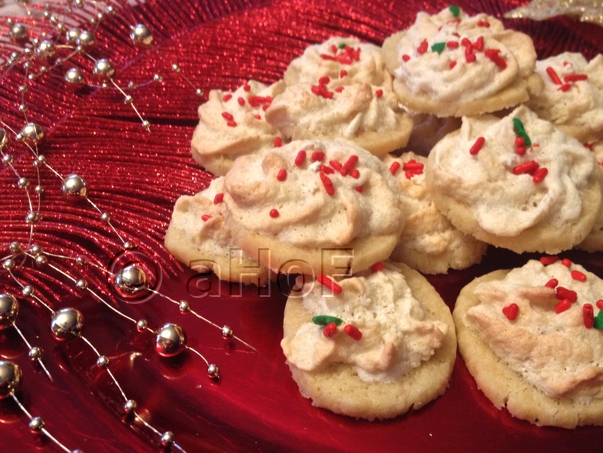 |
| Diana's Sugared Pecans |
I will say, I got this recipe many years ago from my sister, who found it on the internet. I looked and looked yesterday and cannot find that recipe out there, though it must be. Regardless, in the original recipe I believe it said to spread the finished nuts onto waxed paper to separate, and then cool. I have done this in past, but the nuts are exceedingly hot when they go onto the waxed paper. Inevitably, some of the hot nuts will stick to the paper. Not a really big deal, but this time I used Silpats to spread them to cool. Worked most wonderfully! Just FYI.
 |
| Diana's Sugared Pecans |
Diana's Sugared Pecans
Makes about 4+ cups
3¾ cups pecan halves
2¼ cups granulated sugar
3 tablespoons butter
¾ cup sour cream
1 teaspoon cinnamon
1½ teaspoons vanilla extract
Preheat oven to 275 degrees. Place the pecans onto a rimmed baking sheet in one layer. Bake the pecans for about 20 minutes, then set them aside to cool. Have ready either waxed paper or Silpat/silicone sheets.
Place the sugar, butter and sour cream into a saucepan and stir well. Bring the mixture to a boil, then cover the pan for 2 minutes, so the steam washes down any sugar crystals lurking on the sides of the pan. Insert the candy thermometer and cook the mixture on medium heat to soft-ball stage, or 235 to 240 degrees. Remove from heat, add in the cinnamon, vanilla and the pecans and stir well. Pour the mixture onto the prepared waxed paper or silicone sheets and with two forks, separate the nuts into single pieces. Allow to cool and then store in an airtight container until needed.
The second part of the snack treats are Cheese Twists. These were sort of a riff on a recipe on the 'net from Emeril. I started with that recipe and altered it to fit my taste. I used fresh rosemary and then added in some Grains of Paradise. If you are so fortunate as to have these little gems in your spice cabinet, I highly recommend them. If not, use about half the amount of freshly ground black pepper.
 |
| Cheese Twists |
Cheese Twists
Makes about 32
2 sheets Puff Pastry
1 egg, lightly beaten
⅔ cup freshly grated Parmesan Cheese
¼ cup olive oil
2 to 4 cloves garlic, finely minced
1 tablespoon fresh rosemary, minced finely
2 teaspoons Grains of Paradise, ground
1 teaspoon salt
dash of cayenne, optional
Thaw the puff pastry sheets until they unfold easily, about 30 to 40 minutes. In the meantime, in a bowl, combine the Parmesan, olive oil, garlic, rosemary, Grains of Paradise, salt and cayenne, if using. Preheat oven to 400 degrees.
Once pastry sheets are thawed, sprinkle a surface with flour and roll out one of the sheets in only one direction, keeping the corners squared. The sheet length should be about doubled the width. With a pastry brush, brush the lightly beaten egg onto the entire sheet. Using one half of the filling mixture, spread this over one half of the pastry sheet. Fold the unused side over the filled side. With the rolling pin, press the top down to seal the mixture in. Use a long, sharp knife, or pastry or pizza cutter to slice narrow pieces, about 3/8-inch wide. Twist these long strips a few times, and set them, well apart, onto a baking sheet.
 |
| Roll pastry | brush with egg | spread half mixture | on half the sheet |
 |
| Fold opposite side over filling | slice into long strips | twist the strips | bake |
Repeat this with the second puff pastry sheet. Bake each sheet of Cheese Twists for about 10 minutes, until puffed and golden.
I hope everyone celebrating Christmas has a most wonderful holiday, filled with love and happiness. If you are not celebrating Christmas, I hope you find some entertaining recipes herein. I will be absent for a few days with my own celebrations.
My passion is teaching people how to create a harmony of flavors with their cooking, and passing along my love and joy of food, both simple or exotic, plain or fancy. I continue my journey in ethnic and domestic cuisines, continuing my journey to explore diverse culinary experiences and hopefully to start you on a journey of your own. Join me also at A Harmony of Flavors on Facebook, and Pinterest.
































